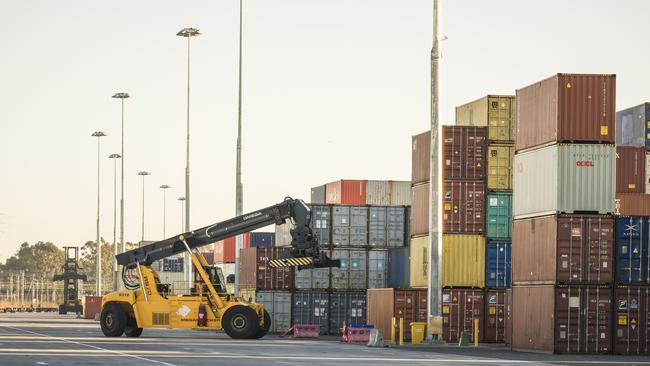Enabling our ports to build a productive, prosperous Australia
While the world continues to work towards finding a new Covid normal, Australia’s ports and port supply chains have remained resilient, operating 24/7 to service businesses and the community.

While the world continues to work towards finding a new Covid normal, Australia’s ports and port supply chains have remained resilient, operating 24/7 to service businesses and the community.
As an island nation, our ports are our gateways to the world, moving 98 per cent of Australia’s trade volume by sea.
During this Covid pandemic, awareness of the role of our ports and supply chains in supporting the nation’s economy and the lives and lifestyles of Australians has expanded. However, many people would be surprised to know that almost half of all items in a Sydney household arrive inside a container through NSW’s container port at Port Botany.
Over the past 12 months, Port Botany handled record container volumes of 2.7 million TEU (20-foot containers), an 11 per cent growth in container imports.
This has been driven by increased spending on goods such as furniture, electrical items, white goods, home renovation items and medical equipment, as Covid restrictions have limited travel and spending on services and many people have been working from home.
Over the next decade we expect container volumes to continue to increase as the population grows.
Cities that deliver
The productivity and growth of any city requires the cost-efficient flow of goods through and around it.
In a future where micro-fulfilment centres, drone and robot couriers, and delivery on demand will be integral to the goods distribution network, policymakers must make informed decisions about land allocation. The right mix of lands to support the economy requires an understanding of the interconnected nature of the freight and logistics system.
The impact of poor land use decision-making is being felt acutely in Sydney as the freight task grows faster than population growth.
Transport for NSW predicts freight will grow 152 per cent between 2016 and 2056, compared with just 54 per cent population growth over this same period.

Port Botany can handle the growing trade volumes, but it does not operate in isolation. The landside logistics task of managing freight at this scale relies on efficient operations of the road and rail network, warehouses, empty container parks and support facilities. This can only happen if there is adequate infrastructure capacity and industrial land available in the right locations, unimpeded by restrictions that arise from urban encroachment.
Historically, Sydney has witnessed a significant reduction in industrial lands. There remains just 390ha around Port Botany. This compares poorly against international comparators, with Antwerp and Rotterdam ports each having 3000ha and Los Angeles port 1000-1500ha of industrial zoned land within 5km of the port.
Port of Vancouver, which has a surrounding industrial land area less than 500ha, demonstrates the unintended economic consequences of inadequate industrial lands.
With this in mind, it is concerning that the retention of the remaining industrial lands in Sydney is under threat from rezoning. The Greater Sydney Commission is currently conducting a review of the NSW government’s Industrial and Urban Services Land Policy. This review will consider whether the current “Retain and Manage” policy for industrial land protection should be changed to permit more “flexible use” to potentially allow rezoning to enable residential and other non-industrial uses.
Fuelling productivity through freight, logistics
The protection and preservation of industrial lands in cities is critical to our future, as every citizen is connected to our freight and logistics system in some way. It provides the food we eat, the goods we rely on to live and work, and takes our Australian exports to the world. The efficiency of this system impacts heavily on the cost, speed and competitiveness of goods purchased and exported.
Rezoning industrial lands for residential and commercial uses may result in profits for landowners and developers but these short-term gains create long-term cost increases for businesses and consumers as freight and logistics providers are pushed away from the customers they service or operational restrictions are imposed.
This creates operational inefficiencies, adds extra trucks to roads, increases truck travel distances and road congestion, generates larger environmental impacts and brings forward the need for infrastructure investment. This will increase as trade volumes grow.
In Sydney we should learn from the adverse impacts of past industrial land erosion. The need for industrial lands in central locations to service a growing Sydney will increase as population and freight volumes grow and our supply chain evolves with advancing technology.
Policy which takes a whole-of-system approach to improving the city’s freight and logistics productivity is essential and this requires industrial lands that serve the freight and logistics system to be retained and protected. The need is urgent.
-
Marika Calfas is chief executive of NSW Ports.


